
The Battles of Rzhev were a series of Red Army offensives against the Wehrmacht between 8 January 1942 and 31 March 1943, on the Eastern Front of World War II. The battles took place in the northeast of Smolensk Oblast and the south of Tver Oblast, in and around the salient surrounding Rzhev. Due to the high losses suffered by the Red Army, the campaign became known by veterans and historians as the "Rzhev Meat Grinder".
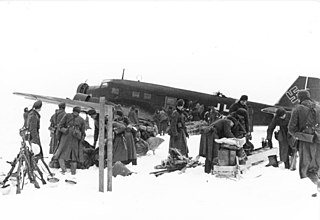
The Demyansk Pocket was the name given to the pocket of German troops encircled by the Red Army around Demyansk, south of Leningrad, during World War II's Eastern Front. The pocket existed mainly from 8 February to 21 April 1942.

The Northwestern Front was a military formation of the Red Army during the Winter War and World War II. It was operational with the 7th and 13th Armies during the Winter War. It was re-created on 22 June 1941, the first day of the Eastern Front on the basis of the Baltic Special Military District. On 22 June the Front consisted of the 8th, 11th, and 27th Armies, as well as the 5th Airborne Corps and the headquarters of the 65th Rifle Corps.

The Battle of the Dnieper was a military campaign that took place in 1943 on the Eastern Front of World War II. Being one of the largest operations of the war, it involved almost four million troops at one point and stretched over a 1,400 kilometres (870 mi) front. Over four months, the eastern bank of the Dnieper was recovered from German forces by five of the Red Army's fronts, which conducted several assault river crossings to establish several lodgements on the western bank. Kiev was later liberated in the Battle of Kiev. 2,438 Red Army soldiers were awarded the title Hero of the Soviet Union for their involvement.

The Raid on Tatsinskaya was a Soviet armoured raid deep into the German rear conducted by 24th Tank Corps under the command of Major General Vasily Mikhaylovich Badanov in late December 1942. It took place during Operation Little Saturn, on the heels of the successful encirclement of the Wehrmacht's 6th Army in the Battle of Stalingrad. The raid was designed to force the Germans to divert forces attempting to relieve the 6th Army. The Soviet force captured its objective, the Luftwaffe's airlift hub at the Tatsinskaya Airfield. The Soviet forces destroyed over 72 aircraft on the ground, but was left cut off and without supplies. Despite the loss of most of the tank corps during the ensuing breakout, the raid was a great operational victory.

The cavalry corps of the Workers and Peasant Red Army was a type of military formation that existed from the early days of the Russian Civil War until 1947 when the Red Army was renamed as the Soviet Army and all cavalry corps were disbanded.
Operation Hannover or Operation Hanover was a German operation in April–June 1942 aimed at eliminating Soviet partisans, airborne troops and encircling Red Army soldiers near Vyazma. The operation was a complete success for the Germans.
The 11th Cavalry Corps of the Soviet Union's Red Army was a cavalry corps active during the Second World War.
The 39th Army was a Field Army of the Soviet Union's Red Army during World War II and of the Soviet Army during the Cold War.
The 4th Airborne Corps was an airborne corps of the Red Army in World War II. It fought in the Vyazma airborne operation, an unsuccessful landing during the Rzhev-Vyazma Offensive.
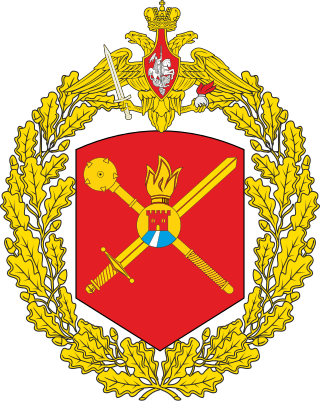
The 49th Combined Arms Army is a combined arms (field) army (CAA) of the Russian Ground Forces, formed in 2010 and headquartered in Stavropol. Military Unit в/ч 35181.
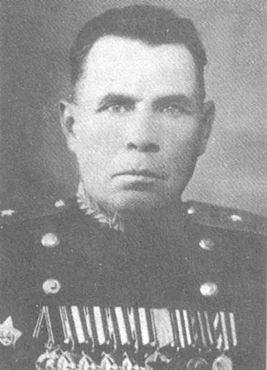
The 251st Rifle Division was the seventh of a group of 10 regular rifle divisions formed from cadres of NKVD border and internal troops as standard Red Army rifle divisions, very shortly after the German invasion, in the Moscow Military District. It was largely based on what would become the shtat of July 29, 1941, with several variations. It served under command of 30th Army in an effort to recover Smolensk in late July and in the Dukhovshchina offensives in August and September, and was quickly reduced to a much-weakened state. It was largely encircled in the initial stages of Operation Typhoon but sufficient men and equipment escaped that it was spared being disbanded. In the following two and a half years the division slogged through the difficult and costly battles around Rzhev and Smolensk as part of 20th Army, and later 31st Army, of Western Front, including several abortive offensives toward Orsha and Vitebsk in late 1943 and early 1944. At the start of Operation Bagration in June the 251st was serving in the 39th Army of 1st Baltic Front and it won a battle honor for its part in the liberation of Vitebsk. Following this victory it advanced into the "Baltic Gap" that had formed between Army Groups North and Center, entering Lithuania and winning the Order of the Red Banner for its part in the fighting for Kaunas. The division was transferred to 43rd Army and then 4th Shock Army as the Front advanced on Riga, and two of its rifle regiments received decorations for the battles for the Latvian capital. In the first days of 1945 the 251st was reassigned yet again, to the 2nd Guards Army of 3rd Belorussian Front, and served under this Army for the duration of the war. It, and several of its subunits, received awards during the East Prussian campaign, and ended the war in East Prussia. After the war the 251st was moved into the Caucasus region, and was finally disbanded in early 1947.

Pavel Alexeyevich Belov was a Soviet Army colonel general and a Hero of the Soviet Union. He was nicknamed the "Fox" by the Germans and personally led the longest successful war raid, lasting five months behind the German lines. He has earned legendary status and could be considered one of the greatest cavalry generals. Considering his accomplishments from 1941-1945, his adaptation of combining horses, tanks, artillery, and aircraft on a modern battlefield resulted in the victory against a more technologically advanced enemy, often in the most desperate parts of the Eastern Front.

The Demyansk Offensive Operation was part of the Soviet strategic offensive known as Operation Polar Star against Axis forces. The operation took place in Demyansk from 15 to 28 February 1943. The Northwestern Front and Mikhail Khozin Special Group engaged the 16th Army of Army Group North in an operation for control of Demyansk and to destroy Axis forces in the region.
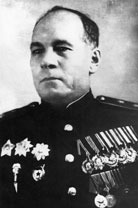
Alexander Fyodorovich Kazankin was a Red Army Lieutenant general who commanded the Soviet airborne. He fought in the Russian Civil War and graduated from the Frunze Military Academy in 1934. Kazankin led the 4th Airborne Corps during the Vyazma airborne operation. He later commanded the 1st Guards Airborne Division, 16th Guards Airborne Division, 12th Guards Rifle Corps and 39th Guards Rifle Corps. Kazankin became the Soviet airborne commander in October 1947, but was demoted to deputy commander in December 1948. After briefly becoming airborne forces commander again between January and March 1950, Kazankin successively became inspector general of the airborne forces and then deputy airborne forces inspector general before his death on 20 March 1955.
The 415th Rifle Division was formed as an infantry division of the Red Army in the autumn of 1941 in the Far Eastern Front. It was considered to be a "sister" division to the 413th, and was one of the divisions of Siberians sent west to help defend Moscow during the winter of 1941-42. It spent much of the next year in the same general area, west of the capital, taking part in the mostly futile battles against the German-held salient at Rzhev during late 1942. Following the evacuation of the salient in March, 1943 the 415th was assigned to the 61st Army, where it remained for most of the rest of the war. It took part in the summer offensives through western Russia and into eastern Belarus during the fall and winter, earning a battle honor in January, 1944. During the later stages of the next summer offensive, Operation Bagration, it distinguished itself in the liberation of Pinsk and was awarded the Order of the Red Banner. Following this it was redeployed northward, still in 61st Army, and took part in the offensives through the Baltic states. In the spring of 1945 the division also earned the Order of Suvorov, 2nd Degree, for its part in the capture of several towns in northeastern Germany. The 415th had a distinguished career as a combat unit, ending its combat path near Berlin, but was disbanded in the summer of 1945.
The 381st Rifle Division was raised in 1941 as an infantry division of the Red Army, and served for the duration of the Great Patriotic War in that role. It began forming in August, 1941 in the Urals Military District. It first served in the bitter fighting around the Rzhev salient, deep in the German rear in the 39th Army and came close to being completely destroyed in July, 1942. The division's survivors were moved north well away from the front for a major rebuilding. It returned to the front in October, joining the 3rd Shock Army for the battle and siege of Velikiye Luki. The division remained in this general area in western Russia until March, 1944, when it was moved to the Reserve of the Supreme High Command and then to 21st Army north of Leningrad in April. It served in the offensive that drove Finland out of the war from June to September, winning a battle honor and the Order of the Red Banner in the process, before being transferred back to the Soviet-German front in October. As part of the 2nd Shock Army of 2nd Belorussian Front the 381st advanced across Poland and Pomerania during the winter of 1945, then joined its Front's advance across the Oder River into north-central Germany in late April, ending the war on the Baltic coast. In the summer of that year the division was disbanded.
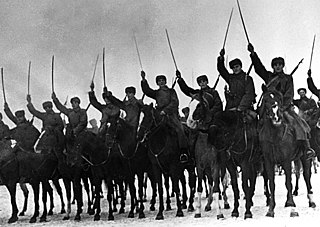
1st Guards Cavalry Zhytomyr Red Banner Corps was a military unit of the Soviet Red Army which was renamed from the 2nd Cavalry Corps. Led by Pavel Belov it was involved in several colossal combat operations during the Great Patriotic War, with its most stupendous accomplishments seen during the Battle of Moscow.
The 222nd Rifle Division was an infantry division of the Red Army, originally formed in the months just before the start of the German invasion, based on the shtat of September 13, 1939. It was formed at Starodub and was considered a "sister" to the 217th Rifle Division. It first saw action in July 1941 as part of 28th Army in the fighting between Smolensk and Roslavl and the division took heavy casualties when it was partly encircled and forced to abandon the latter city in early August. It was again encircled during Operation Typhoon but managed to escape complete destruction and soon came under command of 33rd Army, where it remained for almost the entire length of the war.
The 239th Rifle Division was formed as an infantry division of the Red Army after a motorized division of that same number was reorganized in the first weeks of the German invasion of the Soviet Union. It was based on the shtat of July 29, 1941, and remained forming up and training in Far Eastern Front until early November when the strategic situation west of Moscow required it to be moved by rail to Tula Oblast where it became encircled in the last throes of the German offensive and suffered losses in the following breakout. When Western Front went over to the counteroffensive in the first days of December the division was in the second echelon of 10th Army and took part in the drive to the west against the weakened 2nd Panzer Army. As the offensive continued it took part in the fighting for Belyov and Sukhinichi before being subordinated to the 1st Guards Cavalry Corps in January 1942 to provide infantry support. It then became involved in the complicated and costly battles around the Rzhev salient as part of 50th, 10th and 31st Armies until December. It was then moved north to Volkhov Front, and took part in several operations to break the siege of Leningrad, mostly as part of 2nd Shock and 8th Armies. As part of 59th Army it helped to drive Army Group North away from the city and was rewarded with the Order of the Red Banner in January 1944. During the following months it continued to advance through northwestern Russia but was halted by the defenses of the Panther Line in April. The division took part in the advance through the Baltic states in the summer of 1944 but in February 1945 it was transferred to 1st Ukrainian Front, rejoining 59th Army as part of 93rd Rifle Corps and fought in upper Silesia. In the last weeks of the war the 239th was advancing on Prague, but despite its distinguished record it was selected as one of the many divisions to be disbanded during the summer of 1945.











